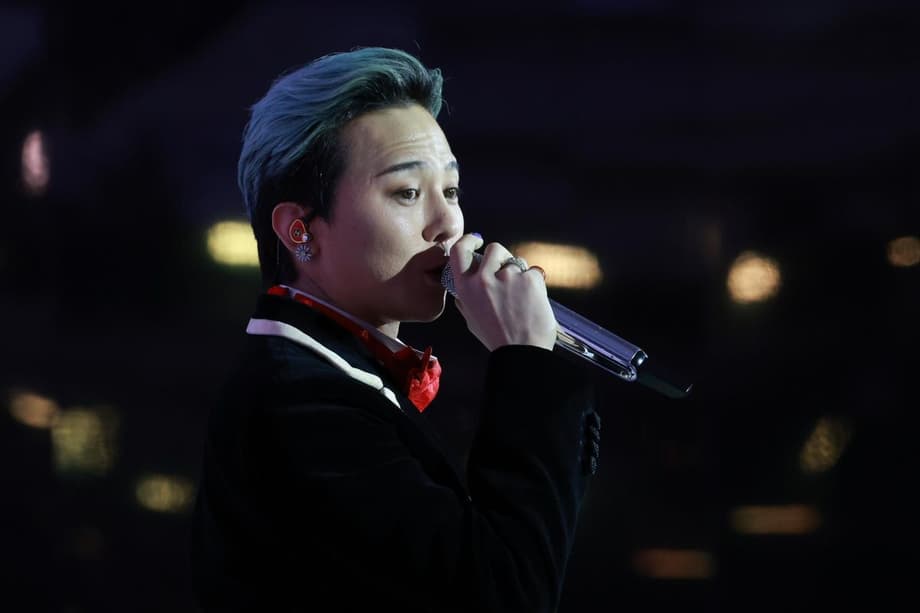A landmark art show meets a rare political opening
G Dragon is set to open a large scale media art exhibition in Hangzhou, a development that many in the culture industry view as the clearest sign in years that China may be relaxing its informal restrictions on Korean entertainment, often called the hallyu ban. The show, titled Ubermensch, is scheduled for Nov. 15 to Dec. 7 at Hangzhou Center in Zhejiang Province. Its timing, just after the first Korea China summit under President Lee Jae Myung, has drawn intense attention because it follows a public moment of cultural diplomacy at the Asia Pacific Economic Cooperation summit dinner in Gyeongju on Oct. 31, where Chinese President Xi Jinping watched a performance by G Dragon and spoke with President Lee during the program.
- A landmark art show meets a rare political opening
- Why the hallyu ban matters and how it began
- Inside the planned Hangzhou exhibition
- Signals from Beijing and Seoul
- What easing could mean across music, film, TV and games
- Why G Dragon matters in China
- Caution from insiders
- What to watch before opening day
- Key Points
The Hangzhou exhibition showcases digital interpretations of themes from the artist’s third studio album, using tools such as artificial intelligence and virtual reality. It premiered at The Hyundai Seoul in March, then drew strong audiences during stops in Tokyo, Osaka, Taipei and Hong Kong. News of the Hangzhou run spread quickly across Chinese social platforms, including Xiaohongshu, with fan communities tracking updates and sharing unofficial previews. While the mounting excitement feels new, industry watchers say the project has been in the works for months, with the team waiting for a window when approvals were more likely.
That caution reflects recent history. The exhibition was originally slated to begin its global tour in Shanghai in May, with promotional materials already prepared. It was delayed, reportedly because of permit issues. Aligning the new dates with the summit calendar appears to have helped the mainland debut move forward. If the Hangzhou run proceeds without incident, it will carry symbolic weight. It would show that authorities are again willing to approve Korean culture projects, at least in forms seen as easier to supervise than arena concerts. Any such move would mark a shift from years of tight limits that were never officially acknowledged but were widely felt across music, television and games.
Why the hallyu ban matters and how it began
The phrase hallyu ban describes a patchwork of restrictions that took shape after tensions rose between Beijing and Seoul in 2016 over the deployment of a United States missile defense system in South Korea known as THAAD. There was no formal decree, but approvals for Korean acts to perform in mainland China slowed or stopped, new Korean dramas were rarely cleared for broadcast, and rules affecting Korean games and variety content grew tougher. Studios, promoters and platforms in China faced uncertainty about what could pass review. Korean companies saw a once vital market fade from view, and Chinese fans turned to overseas streaming or travel to see their favorite artists.
In practice, the policy was unwritten and uneven. Some projects slipped through at a local level, while others stalled late in the process. State aligned networks and large platforms tended to play it safe. Promoters backed away from big live events because venue bookings, visas and censorship reviews could unravel at any point. The result was a sharp contraction in formal Korea China entertainment activity, even as enthusiasm among Chinese fans remained high online.
An unwritten policy that reshaped a market
Approvals in China sit at the intersection of culture, commerce and regulation. That mix makes timing and political mood especially important. During the period commonly called the hallyu ban, companies that relied on China adjusted their strategies. Korean labels pushed harder in Southeast Asia and the Americas, Chinese platforms developed domestic idol formats, and global streaming services filled the gap with Korean series outside the mainland. Many executives still view China as a crucial prize because of its scale. Even limited openings can have an outsized effect on touring, licensing and brand partnerships.
Inside the planned Hangzhou exhibition
Ubermensch is designed as a multimedia experience. The production uses AI driven visuals and immersive installations to translate the music and motifs from G Dragon’s third solo album into a gallery setting. Visitors move through rooms that emphasize sound, light and motion rather than a traditional stage performance. That approach positions the event as art and technology, a category that often faces fewer logistical and crowd control hurdles than a full scale concert.
The show’s track record gives organizers confidence. Since its Seoul debut in March, the exhibition has drawn steady crowds in Tokyo, Osaka, Taipei and Hong Kong. Fan accounts from those cities describe a curated journey through imagery linked to the artist’s creative persona, with a clear through line between musical ideas and visual expression. Chinese fan communities have picked apart every preview clip and poster, and searches related to the Hangzhou stop have trended at times on lifestyle platforms.
From postponed Shanghai opening to a new mainland start
The original tour plan placed Shanghai first, with a spring launch. That plan was pushed back, reportedly because permits were not in place. Organizers then watched the diplomatic calendar. The recent Korea China summit produced language about expanding culture and people to people exchanges. With that signal, and after the high profile APEC dinner where G Dragon performed before both leaders, the Hangzhou dates were set for mid November through early December. Hangzhou has hosted major cultural and sports events in recent years, and it offers modern venues that fit the exhibition’s technical needs.
Signals from Beijing and Seoul
Political timing matters in cross border culture. After the summit, South Korea’s National Security Adviser Wi Sung lac said both leaders had addressed cultural ties. His comment captured the cautious optimism in the sector.
Wi Sung lac, South Korea’s national security adviser, summarized the cultural message from the summit. He said the two leaders touched on cultural exchange in their talks.
The leaders discussed the importance of expanding exchanges and cooperation in culture.
Public optics added to the sense of a thaw. At the APEC dinner, President Xi and President Lee were seen speaking while watching G Dragon’s performance. In Chinese business circles, there is talk of looser approvals for Korean acts and signs that large ticketing platforms are warming up to cross border events again. No department in Beijing has announced a formal policy change, and the term hallyu ban has never appeared in an official directive. Even without paper, the market responds to signals. Approvals, promotion slots on platforms, and local venue cooperation are often the first places where sentiment shifts.
What easing could mean across music, film, TV and games
If Hangzhou opens on time and runs smoothly, the next questions for the industry involve scale, format and speed. A limited exhibition is one kind of test. Stadium concerts, drama licenses and variety appearances bring a different risk profile because they need many more approvals and involve large crowds or mass audiences. Companies in both countries are preparing playbooks for several scenarios. Many are likely to start with contained events and then expand if they sense momentum.
Concerts and fan events
A green light for exhibitions can pave the way for theater shows, fan meetings and small venue concerts. These formats let regulators evaluate crowd management and content review in a controlled way. If that goes well, arena tours could return in phases. Local partners, who understand venue permitting and content guidelines, will play a central role. Korean labels will weigh the gains of reentry against the costs of customizing setlists, stage visuals and merchandise to meet Chinese requirements.
Screens and streaming
Television dramas and variety shows were a major part of hallyu’s reach in China prior to 2016. A selective opening might begin with acquisitions for platforms that focus on premium drama, followed by variety and reality titles that can be edited for local standards. Co production is another possibility, though those projects move slowly and require detailed compliance planning. If even a handful of high profile series return to major platforms, it would signal that content licensing is viable again.
Gaming and live commerce
The game sector is sensitive to licensing decisions. During the years of tighter limits, Korean developers saw few approvals in mainland China. Any resumption, even at a limited pace, would have an immediate effect on revenue forecasts. Live commerce and endorsements are another area to watch. Korean celebrities have long had strong brand appeal with Chinese consumers. If rules around livestream promotions and ad campaigns soften, there could be a quick uptick in cross border deals.
Why G Dragon matters in China
G Dragon has a unique place in Asian pop culture. As the leader of BigBang and as a solo artist, he helped define a sound and style that shaped a generation of fans. His creative persona blends music, fashion and visual art. That versatility is well suited to an exhibition format. In China, his fan base remained energetic online even during the lean years, supporting releases, posting edits and traveling to nearby markets to attend shows. An art and technology exhibition creates a lower friction way to reconnect with those fans inside the mainland.
The project is also a test of concept for how Korean stars can reengage. An exhibition is easier to calibrate for content and crowd control. Ticketing can be capped and scheduled, the experience is consistent, and there are few last minute changes to rosters or scripts. If the event attracts strong attendance without incident, local authorities may view it as a model that can scale up. That would encourage more galleries, museums and mixed use malls to invite Korean pop culture figures for similar installations.
Caution from insiders
Optimism across the industry is matched by a healthy dose of caution. No formal policy has been issued to lift any restrictions. Approvals can vary by city and venue. Content still requires review, and cultural authorities may prefer events that they can easily supervise. Several executives expect the first phase to favor small scale or controllable formats, while larger projects will take more time.
An official from a Korean cultural organization in Beijing said a gradual opening looks likely, while warning that timetable and process matter most.
China clearly recognizes the importance of cultural and human exchanges, so a gradual opening seems likely. But the pace and method are key.
Companies planning a return will need strong local partners and contingency plans. Contracts should account for potential changes in dates or capacity. Creative teams will prepare alternate versions of songs and visuals for review. Legal and compliance teams will handle licensing, tax and labor issues for staff working in China. This groundwork can be expensive, so many firms will start with pilots that are large enough to test demand but small enough to manage.
What to watch before opening day
Several practical signals will reveal whether Hangzhou is truly a turning point. The first is permitting. If the show completes installation, opens on schedule and welcomes media coverage without restrictions, that will validate the concept. The second is platform support. Promotion on major Chinese ticketing and lifestyle apps would show confidence. The third involves future scheduling. If more Korean projects announce mainland dates during or immediately after the Hangzhou run, momentum will look strong.
Also watch how the event handles content and crowds. Curated experiences are usually straightforward, but organizers will coordinate closely with venue managers to manage entry times, merchandise queues and security. Smooth operations will build trust with local authorities and encourage follow on applications. If Hangzhou succeeds, the next steps could include a return to Shanghai for the exhibition or a shift to fan meetings and theater sized shows with other Korean artists.
Diplomacy will continue to shape the operating environment. If bilateral ties stay stable, approvals can continue to loosen. If tensions rise, individual events can still proceed, but the pace may slow. For now, the opening in Hangzhou stands as a meaningful cultural gesture and an early test of how far a thaw can go.
Key Points
- G Dragon will stage the Ubermensch media art exhibition in Hangzhou from Nov. 15 to Dec. 7.
- The event follows the first Korea China summit under President Lee Jae Myung and a G Dragon performance at the APEC dinner in Gyeongju witnessed by President Xi.
- The show uses AI and VR to reinterpret themes from G Dragon’s third studio album and has toured Seoul, Tokyo, Osaka, Taipei and Hong Kong.
- The exhibition was planned for Shanghai in May but was delayed, reportedly over permits, before being reset for Hangzhou.
- South Korea’s national security adviser said the leaders discussed expanding cultural exchange and cooperation.
- China has never issued a formal notice lifting the hallyu ban, but business signals point to looser approvals and growing platform support.
- Exhibitions offer a controlled format that is easier to authorize than large concerts, making them a logical first step.
- A smooth Hangzhou run would encourage more Korean culture projects to apply for mainland dates.
- Concerts, TV licensing and games could benefit if openings expand, though approvals are likely to remain case by case.
- Industry insiders expect gradual progress, with small scale and controllable events leading before larger pop culture shows return.




